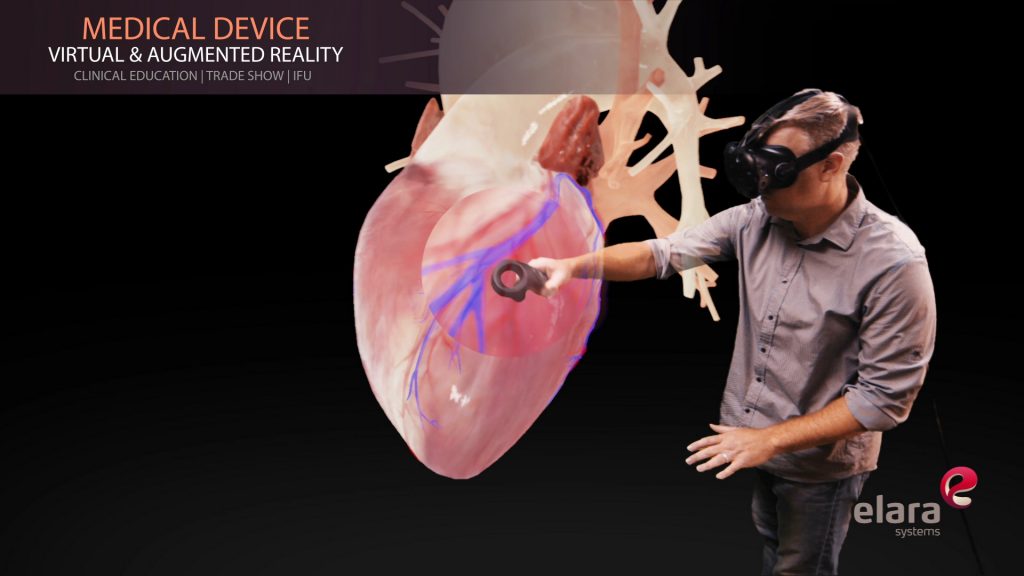VR in Medical Field

How is virtual reality being used in the medical field?
When people think about virtual reality, one of the first things that they often imagine is the massive potential for new technology that it holds. The medical virtual reality field seems to affect patients’ lives and healthcare professionals’ work positively. Now, scientists and medical providers can rely on various medical virtual reality, in medicine, and in VR medical training to help diagnose, treat, and train a variety of health problems in patients.
Below are different ways virtual reality is being used in the healthcare industry:
1. Exposure therapy
Virtual reality is an effective tool for patients with phobias. In some exposure therapy sessions, many psychiatrists are using virtual reality to help patients deal with fears of things like heights and claustrophobia. The virtual reality machine creates a controlled environment in which patients can face their greatest fears. Patients also learn some coping strategies and breaking patterns of avoidance in a conducive setting that allows them to easily handle those gruesome situations with much ease.
2. Treatment for PTSD
Just like exposure therapy for anxieties and phobias, virtual reality is being used to help soldiers suffering from PTSD (post-traumatic stress disorder). Many clinics and hospitals are employing virtual reality simulations of war grounds, like Afghanistan and Iraq, to help veterans who continually relive the traumatic events they might have experienced in war. Such people are put in a safe and controlled environment where they can learn to deal with incidences that might otherwise be maladaptive to behavior and could be destructive to others and even to themselves.
3. Pain management
Pain is usually a very serious issue among many patients, particularly among burn victims. The distraction therapy doctors put in place through virtual reality at least helps alleviate most of this pain. In physical therapy and wound care sessions, patients are kept busy with a fun virtual reality video game to play. This blocks a person’s senses and pain pathways in the brain, allowing any procedure to be carried out seamlessly by the healthcare provider.
4. Surgical training
Training for surgeons involves experimenting on people’s bodies and a gradual process of assisting more experienced doctors before undertaking other complex tasks of surgery. Virtual reality could provide a rather effective basis for practice without exposing patients to any harm. Some virtual reality machines have a surgery simulator and a haptic feedback mechanism, which comes in handy for anyone training. The simulator simply collects CT scans from patients and creates 3D models from those scans for practice.
5. Brain damage examination and rehabilitation
Virtual reality is an effective tool for assessing brain impairments and treating the underlying issue altogether. As a patient has fun playing their game, the virtual reality video game picks up the sequence and organization and changes in thinking or behavior patterns. From all this collected data, the virtual reality machine guides patients on ways to solve those problems and improve their cognitive function accordingly.
6. Social cognition training for young adults with autism
Children with autism may also benefit from virtual reality a lot, particularly in honing their social skills. Some virtual reality machines have brain imaging and brain wave monitoring capabilities, which kids can use to schedule blind dates and job interviews using avatars. Consequently, the children work on behaving in a socially acceptable way and reading social cues, which greatly improves their social skills.
7. Speeding up recovery after a stroke
Time is of the essence for patients who survive a stroke or a traumatic brain injury. The earlier a person starts rehabilitation, the better their chances of regaining lost functions. With the help of virtual reality, such patients can easily identify new ways to lift their arms or move their fingers. From this experience, patients also become very resilient and optimistic, and their once traumatized nervous system can recover more quickly than anticipated.
Above are some of the ways virtual reality is rapidly changing the healthcare world. Medical virtual reality is an area full of fascinating possibilities. Gamers aren’t the only people who experience all the fun – clinical researchers and real-life medical specialists are excited about this technology, as well. Every day healthcare providers are finding new ways to improve people’s lives.
